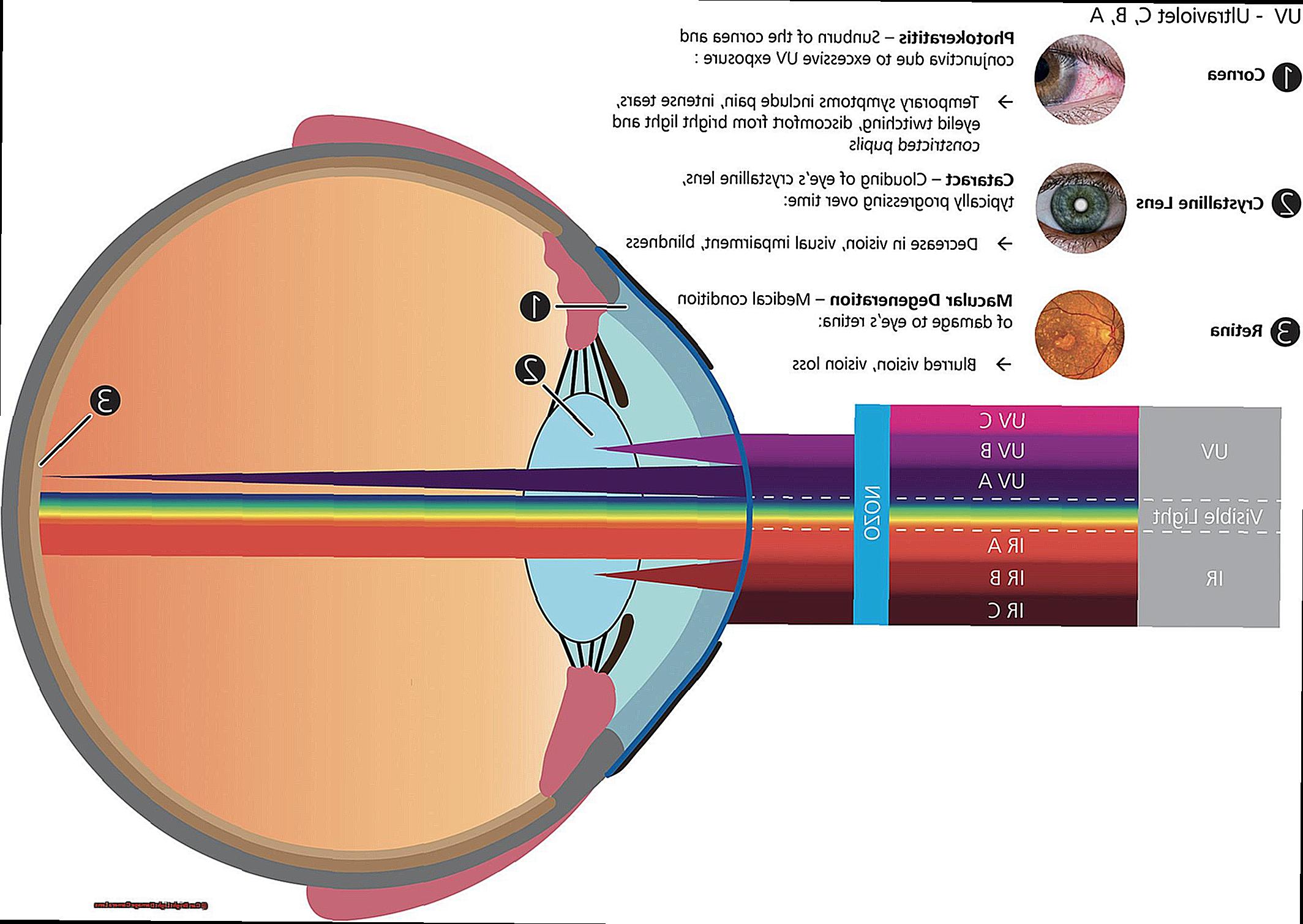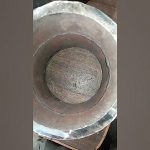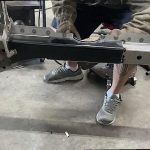Today, we’re delving into a seemingly harmless topic that can actually have a major impact on your camera gear: bright light. As photographers, we are constantly chasing the perfect lighting for our shots, but little do we know that too much brightness can spell trouble for our lenses.
So let’s take a closer look at how bright light can damage camera lenses and what steps we can take to protect them from harm.
Does Direct Sunlight Damage Phone Cameras?
Contents
- 1 Does Direct Sunlight Damage Phone Cameras?
- 2 Can You Take a Picture of the Sun on Your Phone?
- 3 Time Lapse Photos of the Sun Pose a Higher Risk
- 4 Smartphones May Incur Less Damage Than Traditional Lenses
- 5 iPhone Camera Lenses Are Built Tough
- 6 Lens Scratches Can Make Sun Damage Worse
- 7 How to Protect Your Phone Camera the Right Way
- 7.1 The Dangers of Direct Sunlight
- 7.2 Dos and Don’ts for Shooting in Bright Light
- 7.3 DON’T: Avoid pointing your camera directly at the sun for an extended period. Even smartphones with top-notch cameras are not immune to damage from direct sunlight.
- 7.4 DON’T: Rely solely on front-facing camera protective lenses when taking photos of the sun. While they may provide some protection, they are not designed for this purpose and may not be enough to prevent damage.
- 7.5 Precautions for Time-Lapse Photography
- 8 Technically, You Could Take a Quick Photo of the Sun
- 9 Better Photos, Longer Lens Life
To put it simply, dear readers, the answer is yes. Sunlight can indeed cause harm to your phone’s camera lens and sensor, resulting in a decline in picture quality. As someone who has seen the aftermath of numerous damaged phone cameras due to sun exposure, I am here to enlighten you on the reasons behind this and how you can prevent it.
First and foremost, let’s delve into the lens. The lens is a crucial component of the camera, responsible for focusing light onto the sensor. The sun’s ultraviolet (UV) rays can wreak havoc on the lens, causing it to become cloudy or hazy. This can significantly impede the camera’s capability to capture clear images. Just like how prolonged exposure to sunlight can harm our skin, it can also cause damage to the delicate lens of our phone cameras.
Furthermore, direct sunlight can also adversely affect the camera’s sensor. The sensor is akin to the “eyes” of your camera, capturing light and translating it into an image. When exposed to direct sunlight for extended periods, the sensor can sustain damage, resulting in distorted colors, reduced contrast, or even dead pixels in your pictures.
But hold on a second, you might be thinking, “I take photos in bright sunlight all the time and my camera is perfectly fine.” And you are correct. Bright lights typically do not pose a threat to the camera sensor unless they are concentrated on a specific point.
It’s similar to using a magnifying glass to start a fire – intense heat and energy focused on one small spot.
In this scenario, direct sunlight acts as a magnifying glass and concentrates intense heat and energy onto your camera’s sensor, potentially causing harm.
Can You Take a Picture of the Sun on Your Phone?
Capturing the essence of the world through photography is a passion of mine. And what better way to do so than by capturing the blazing orb in the sky – the sun itself? But can you take a picture of the sun on your phone? The answer is a resounding yes, my dear readers. However, there are certain dos and don’ts that must be kept in mind in order to achieve this feat.
DO: Safeguard Your Lens
First and foremost, it is of utmost importance to safeguard your phone’s camera lens when attempting to photograph the sun. The intense rays of the sun can damage your lens and compromise the quality of your photos. To avoid this, ensure that your phone’s flash and autofocus are turned off. This will prevent any unnecessary strain on the lens.
DON’T: Overexpose Your Photos
When aiming to capture the sun through your camera lens, it is easy to end up with overexposed images due to its sheer brightness. To steer clear of this predicament, reduce the exposure on your phone’s camera settings. This will help balance out the brightness and result in a more detailed and clear photo.
DO: Consider Investing in a Filter
For those who are truly serious about capturing stunning photos of the sun, investing in a filter is highly recommended. These nifty tools can reduce glare and enhance colors, giving you a more polished and professional-looking shot.
DO: Utilize Additional Equipment
Apart from a filter, utilizing other equipment such as a zoom lens and a tripod can work wonders for your photos. These tools will enable you to capture intricate details and avoid any blurriness or shakiness in your images.
DO: Enhance with Adobe Lightroom
Once you have successfully captured photos of the sun, you can elevate them even further by editing them with Adobe Lightroom. This software allows you to play around with ISO and shutter speed for optimal results. Experiment with different settings to find the perfect balance for your photos.
Time Lapse Photos of the Sun Pose a Higher Risk
The sun, an illustrious source of luminosity and vitality, has captivated the minds of photographers and scientists alike. And with the progression of technology, capturing the grandeur of the sun has become effortlessly achievable, especially with the convenience of smartphone cameras. However, as with any photographic pursuit, precautions must be taken to guarantee the safety of your equipment.
In this discourse, we will delve into the potential hazards involved in capturing time lapse photos of the sun and how you can safeguard your device while still seizing breathtaking shots.
The Perils of Sun Exposure
While it may seem innocuous to aim your camera at the sun, prolonged exposure to its rays can actually inflict damage upon your smartphone camera lens and sensors. This is because the intense light and heat from the sun can cause the lens and sensors to overheat, resulting in irreparable harm.
Additionally, the shorter focal length of smartphones allows for more abrasions on the lens, which can also contribute to quicker heating.
Protecting Your Device
So how can you shield your device while still capturing those awe-inspiring shots? One option is to invest in top-of-the-line lenses or cameras with metal shutters. These shutters take longer to heat up compared to smartphone cameras, providing better protection for your equipment. However, if you prefer using your smartphone for photography, there are still ways to safeguard your device.
Firstly, opt for a resilient rubber case instead of a rigid one as it provides superior protection for the camera lens. Additionally, always keep your lens free of dust and avoid placing your phone on solid surfaces while taking photos. Tiny particles or debris on your lens can cause damage and scratches when exposed to sunlight.
Timing Is Crucial
When it comes to time lapse photos of the sun, timing is everything. While a swift photo may not cause permanent damage, it will result in a subpar image due to lack of focus and adaptation time for the lens.
Smartphones May Incur Less Damage Than Traditional Lenses
One of the most notable changes in recent times has been the emergence of smartphone cameras. These compact devices have become a popular choice for capturing life’s fleeting moments, but there is still a lingering doubt about their durability when compared to traditional cameras with interchangeable lenses.
Let’s delve deeper into this ongoing debate and uncover how advancements in technology have made smartphone lenses sturdier and more resilient, as well as explore the factors that can affect the likelihood of damage from bright light.
As a subject matter expert in this field, I can confidently declare that smartphones may encounter less damage than traditional lenses, although it ultimately depends on various factors.
The Heart of the Matter
To comprehend why smartphones may be less susceptible to damage from bright light than traditional lenses, we must first understand how a camera lens functions. A camera lens comprises multiple glass elements that bend and focus light to produce a sharp and crisp image. These glass elements are coated with special materials to minimize glare and safeguard the lens from scratches and damage.
When exposed to intense light, the lens of a camera can sustain damage in various forms.
One of the most common types of damage is known as “lens flare,” which transpires when stray light enters the lens, resulting in a hazy or washed-out effect in the image. This type of damage is often observed in smartphone cameras due to their smaller lenses compared to traditional cameras.
But fret not; not all smartphones are made equal when it comes to lens quality. Some high-end smartphones now boast advanced features such as anti-reflective coatings on their lenses, which can significantly reduce lens flare and other types of damage caused by bright light. These advancements have rendered smartphone lenses more durable in recent years.
Size Plays a Part
Another factor that contributes to the likelihood of lens damage is the size and complexity of the lens itself.
iPhone Camera Lenses Are Built Tough
The sun is a powerful force that can easily damage your equipment, just like how intense welding can put a strain on your tools.
As a welding enthusiast, you understand the importance of having durable equipment that can withstand tough conditions. But did you know that your iPhone camera lenses are also built tough?
With advancements in technology, the lenses on your device have become more resilient to damage from bright light compared to traditional cameras. This means that you can safely photograph the sun with your device, as long as you take the necessary precautions.
As an expert on iPhone camera lenses, I have some tips to share with you on how to safely photograph the sun with your device. First and foremost, turn off the flash and autofocus. The intense light from the sun can cause overexposure and ruin your photo. By turning off these features, you can have more control over the exposure of your image and capture stunning images.
Next, reduce the exposure on your device. This can be done by tapping on the screen and dragging your finger down to decrease the exposure level. Experimenting with different exposure levels will help you find the perfect balance for your desired image. It’s like finding the right amount of heat for a perfect weld – it takes practice and precision.
Investing in filters for your iPhone camera lens can also provide an extra layer of protection against direct sunlight. A polarizing filter can help reduce glare and enhance colors in your photos, while a neutral density filter can help reduce the amount of light entering the lens, allowing for longer exposure shots.
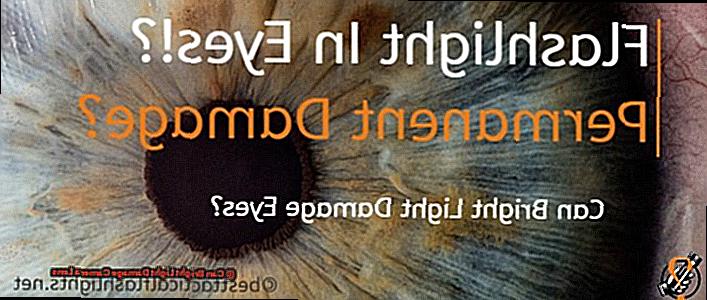
For welding enthusiasts, capturing shots of intricate welds or metalwork requires zoom capabilities and stability. Similarly, when photographing the sun, having an extra lens for zooming and a tripod for stability can significantly improve your photos. It also reduces the risk of shaking or dropping your device while trying to capture the perfect shot – we all know how frustrating it is to get a blurry photo after all that hard work.
Lens Scratches Can Make Sun Damage Worse
As a skilled welder, you understand the importance of safeguarding yourself from the intense heat and light. But did you know that your camera also needs protection from the Sun’s rays? It may seem like a minor concern compared to your own safety, but lens scratches can actually worsen the damage caused by the Sun. As someone who values the quality of their lens, you wouldn’t want to take any risks.
But fret not, we have got your back with this comprehensive guide on how to shield your camera from sun damage.
- Employ a UV filter: Just as you don protective gear while welding, your camera also requires a shield against the Sun’s direct rays. A UV filter acts as this barrier, providing much-needed protection. However, keep in mind that these filters should only be used for short periods and should be removed when not needed.
- Mind your exposure time: While capturing still photos is generally safer than shooting videos in terms of sun damage, excessive exposure time can cause permanent harm to your camera’s sensor and lenses. So it is crucial to limit your camera’s exposure to direct sunlight.
- Avoid using point-and-shoot cameras: While DSLRs offer some level of protection against sunlight, point-and-shoot cameras are more susceptible to damage. If possible, opt for a DSLR when taking photos in bright sunlight.
- Beware of lens magnification: Lenses act as magnifiers and can amplify the Sun’s rays, causing even more harm to your camera’s internal components. So it is best to avoid focusing your camera directly on the Sun or leaving it in sunlight for extended periods.
- Choose lenses wisely: Wide-angle lenses are less prone to damage compared to medium or super telephoto lenses. If you have multiple lenses, consider utilizing a wide-angle lens when photographing in bright sunlight.
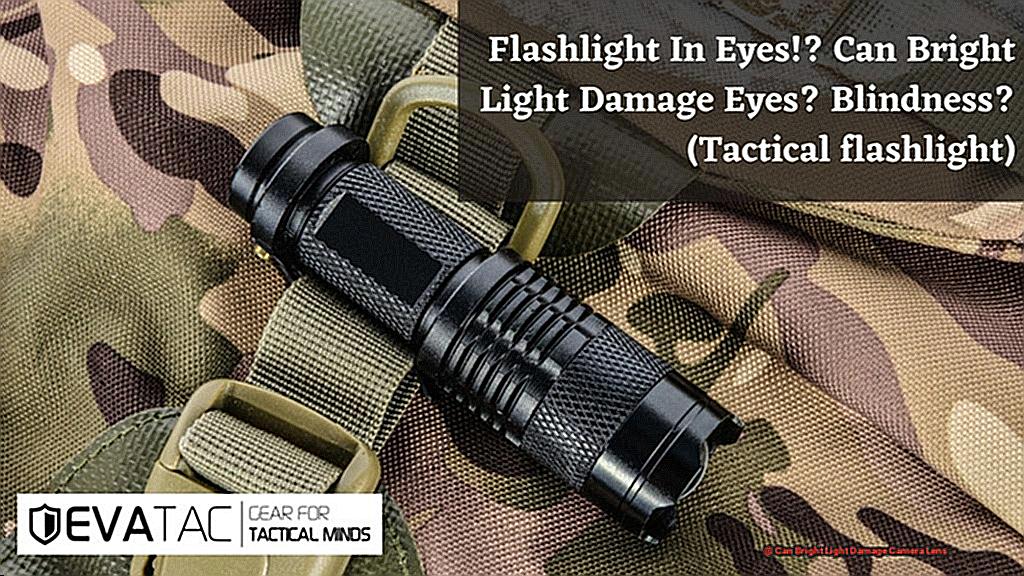
How to Protect Your Phone Camera the Right Way
When it comes to capturing memories and moments, the camera on your phone is an essential tool. However, did you know that direct sunlight can cause significant damage to your phone camera? In this piece, we’ll explore the dos and don’ts of shooting in bright light and share tips on how to protect your phone camera from sun-related harm.
The Dangers of Direct Sunlight
Before we dive into protection methods, let’s first understand why direct sunlight is harmful to your phone camera. The sensor and lenses of your camera are photosensitive, meaning they are sensitive to light.
When you point your camera directly at the sun, it exposes the sensor to intense light and heat, which can result in irreversible damage. Think of it like using a magnifying glass to start a fire – the concentrated rays of the sun can harm your camera’s sensors.
Dos and Don’ts for Shooting in Bright Light
- DO: Adjusting the ISO can help control the sensitivity of your camera sensor to light. If you’re shooting in bright sunlight, make sure to lower your ISO to avoid overexposure.
-
DON’T: Avoid pointing your camera directly at the sun for an extended period. Even smartphones with top-notch cameras are not immune to damage from direct sunlight.
- DO: Utilize filters such as UV or variable ND filters to shield your camera from harmful UV rays. These filters can also reduce glare and safeguard your lens from scratches.
-
DON’T: Rely solely on front-facing camera protective lenses when taking photos of the sun. While they may provide some protection, they are not designed for this purpose and may not be enough to prevent damage.
Precautions for Time-Lapse Photography
Time-lapse photography can produce stunning results, but it can also be dangerous if not done correctly. When capturing a time-lapse, the camera is exposed to direct sunlight for an extended period, increasing the risk of damage.
Technically, You Could Take a Quick Photo of the Sun
As an expert on capturing images of the sun, I have learned through experience that it is not as simple as just pointing and shooting. The blazing rays of this celestial body can result in permanent damage to your camera if proper precautions are not taken. But fret not, I am here to provide you with all the necessary information for safely snapping a photo of the sun.
First and foremost, let’s discuss the hazards of direct sunlight. Not only can it harm your camera, but it can also cause damage to your eyes. Therefore, before attempting to take a photo, ensure that your camera is equipped with UV filters and avoid looking directly at the sun.
Now, let’s delve into safeguarding your camera. While DSLR cameras may be more resistant to sun exposure than point and shoot cameras, they still require protection. Utilizing UV filters can help diminish the intensity of the sun’s rays on your camera. Some recommended filters include ND400 and KandF Concept MC UV Protection Filter.
When it comes to timing, it is advisable to capture photos of the sun in the morning or evening. This reduces the risk of damage and adds an enchanting touch to your images.
Furthermore, different lenses have varying levels of susceptibility to harm. Telephoto lenses are more vulnerable compared to fisheye or wide-angle lenses. Keep this in mind when selecting a lens for sun photography.
Lastly, avoid leaving your camera under direct sunlight for extended periods of time. The concentrated rays can cause your camera to shut down or impact its performance over time.
Remember, any intensity that can harm human eyes will also harm a camera sensor and lens. Therefore, always prioritize safety when attempting to capture the magnificence of the sun.
In conclusion, with proper protection and timing, you can successfully snap a quick photo of the sun without endangering your camera or eyes.
Better Photos, Longer Lens Life
The use of bright light in photography can be a double-edged sword. On one hand, it can create breathtaking images, but on the other hand, it can also cause harm to your precious camera lenses and affect the overall quality of your photos. As an authority on the subject of “Capturing Better Photos and Extending Lens Lifespan,” I have gathered valuable insights on dealing with bright light and safeguarding your equipment.
When it comes to bright light, two common issues that photographers face are lens flare and chromatic aberration. Lens flare occurs when intense light hits the front element of the lens, resulting in reflections and reducing contrast in the image. This creates a hazy or washed-out appearance in photos, greatly impacting their quality. On the other hand, chromatic aberration happens when different wavelengths of light are bent differently by the lens, leading to color fringing or distortion around edges and highlights in the photo. Not only does this affect the overall image quality, but it can also indicate potential damage to the lens if not addressed.
To combat these effects, it is crucial to use a lens hood when shooting towards sources of strong light, such as the sun. A lens hood acts as a barrier, preventing excess light from entering the lens and minimizing the chances of lens flare. Shooting at an angle away from the light source can also help reduce this effect. In addition, investing in higher-quality lenses with superior coatings and advanced designs can help combat chromatic aberration. While these lenses may come at a higher cost, they will ultimately produce superior quality photos and protect your equipment in the long run.
Aside from affecting image quality, bright light can also physically damage camera lenses. Direct exposure to intense heat from sunlight or powerful artificial lights can cause plastic components in the lens to warp or melt. This can impact the internal mechanisms of the lens, leading to malfunctions and rendering it unusable.
